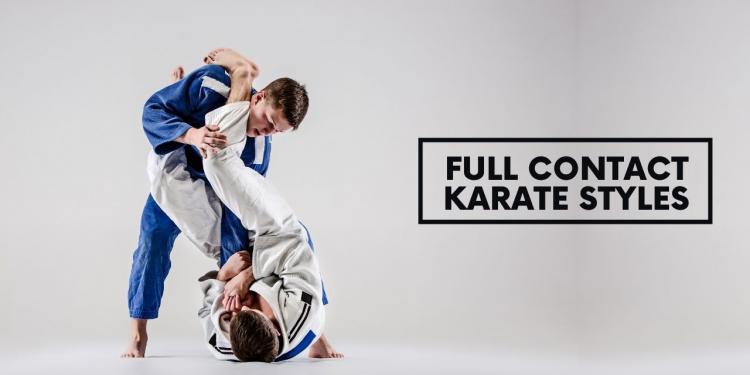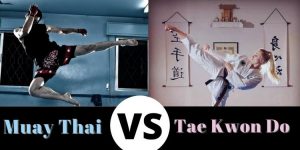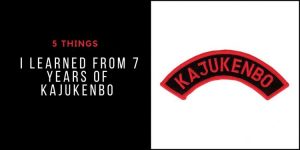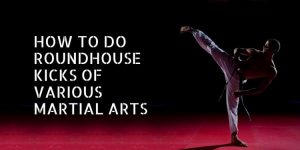As a former Shorin Ryu karate and current Kyokushin karate student, I have witnessed how vastly different the different styles of karate are. Some barely allow any sparring while others allow full contact sparring.
So if you want to take karate and want your training to translate into real-life effectiveness, you should go to a full contact karate school. Although katas, kihon, and point sparring has its place in training, it is the full contact that allows you to apply your training in real-life situations. The following article outlines the various full contact styles and their similiarities and differences.
A List of Full Contact Karate Styles

So what is full contact karate? Full contact karate are karate styles that compete in knockdown karate rules and therefore spend a large amount of time doing full contact sparring. Here is a basic list of rules that full contact karate styles follow.
- The accumulation of 2 Waza-Ari (half point). This would be a blow that temporarily stuns the opponent but the opponent is still able to fight and is not knocked down
- An attack that knocks down the opponent for more than 3 seconds
- A legal technique that renders the opponent being reluctant to continue the fight
- Disqualification
When most people talk about full contact karate, they talk about the rules in which the tournament in the system is based on. And of course, since the tournament is built around those rules, the karate system trains by those rules and spars full contact heavily. Below is a list of full contact karate styles:

Enshin Karate – This style of karate is one of the newest full contact karate styles, being formed in 1988. The core emphasis of this style is sabaki, which is a method of turning the opponent’s momentum and power against him, as well as using repositioning yourself to advantageous spots/angles. In this style, various throws, sweeps, and grabs from various other grappling styles are also employed.
Kyokushin Karate – Kyokushin is probably the most well-known type of full contact karate as it is the biggest and several high-caliber MMA fighters (Uriah Hall, Georges St. Pierre, etc) have a background in it. Kyokushin tournaments allow for a full range of attacks with the hands and feet. However, you are not allowed to strike your opponent to the face with the hand. This is to protect the hands, rather than the face.
Ashihara Karate -Ashihara is a relatively new form of full contact karate that is derived from kyokushin karate. The founder Hideyuki Ashihara, trained kyokushin at the Oyama dojo but also sought influence from boxing, muay thai, and Japanese jujutsu. Tournaments of Ashihara karate are similar to those of Enshin in terms of rules and allowed techniques. As such, one-handed grabs and throws are allowed in Ashihara karate.
Shidokan Karate – This style of full contact karate has earned its label as the “triathalon of karate” because of how it encompasses full contact karate, muay thai, and grappling into its ruleset. The tournament’s striking rules are similar to that of karate styles that have some muay thai influence. But what makes Shidokan karate different is the allowance of sweeps, joint locks, slams, and throws. The style even lets you advance your position on the ground off a takedown.
Seidokaikan – Derived from kyokushin, this style gave birth to K-1. This style was formed by Kazuyoshi Ishii in 1981. Stylistically, the style is extremely similar to its parent, kyokushin—with almost identical kata and training regimen. This style should not be confused with seido, which is a form of non-full contact karate.
Kudo (or Daidojuku) – This is a form of hybrid full contact karate. In this style, you will see tournament participants wear headgear with plastic front covering. This style employs a fair amount of grappling in their tournaments, with submissions and ground-and-pound being allowed. Kudo also uses small gloves in their tournaments. Thus, because of these rules in their tournaments, kudo is seen as the karate style most resembling modern day MMA. Here is a video of kudo tournaments:
[responsive_video type=’youtube’ hide_related=’0′ hide_logo=’0′ hide_controls=’0′ hide_title=’0′ hide_fullscreen=’0′ autoplay=’0′]https://youtu.be/KOCAiHeS-GY[/responsive_video]
Kenpo/Kempo Karate – Kenpo may or may not offer full contact sparring—it really depends on the dojo with kenpo. Kenpo/kempo is a general term used to describe several Japanese martial arts. Japanese kenpo (Nippon Kempo) has its roots in Chinese martial arts, being a derivative of Shaolin Kung Fu, mixing Northern Shaolin acrobatic legwork with the rooted style of Southern Shaolin. Japanese Kenpo also includes some groundwork as well as throws and joint locks. American Kenpo is a style that combines the hands and the feet with rapid and fluid stance transitions. You can see this with UFC’s Stephen Thompson, who is considered the best striker currently active with the UFC.
Some kenpo schools offer only point sparring while others emphasize full contact sparring (with headgear and small gloves), depending on which ruleset they compete under (semi-contact kempo, mixed kempo, or knockdown kempo).
Conclusion
As recently proven by many successes of karatekas in MMA, traditional martial arts, like karate, has a place in modern day fighting. In fact, a lot of traditional martial artists have a lot of advantages over the modern day martial artist, such as the variety of kicks and being able to attack from multiple angles. However, many karate dojos have been watered down for the sake of safety and money. So if you want to learn karate that is useful and effective, it is best to join a dojo that allows for full contact sparring. Otherwise, you’re learning all theory and won’t know what to do when someone comes at you with a barrage of strikes.




